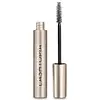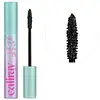What's inside
What's inside
 Key Ingredients
Key Ingredients

 Benefits
Benefits

 Concerns
Concerns

 Ingredients Side-by-side
Ingredients Side-by-side

Water
Skin ConditioningGlyceryl Stearate
EmollientCopernicia Cerifera Wax
Ricinus Communis Seed Oil
MaskingAcrylates Copolymer
Vp/Hexadecene Copolymer
Cetearyl Alcohol
EmollientGlycerin
HumectantPolyvinyl Alcohol
Microcrystalline Wax
Emulsion StabilisingEthylhexylglycerin
Skin ConditioningLecithin
EmollientAscorbyl Palmitate
AntioxidantTocopherol
AntioxidantCeteth-10 Phosphate
CleansingDicetyl Phosphate
EmulsifyingCitric Acid
BufferingSodium Hydroxide
BufferingSodium Citrate
BufferingBenzyl Alcohol
PerfumingPotassium Sorbate
PreservativeSodium Dehydroacetate
PreservativeDehydroacetic Acid
PreservativeBHT
AntioxidantPhenoxyethanol
PreservativeIron Oxides
CI 77491
Cosmetic ColorantCI 77492
Cosmetic ColorantCI 77499
Cosmetic ColorantWater, Glyceryl Stearate, Copernicia Cerifera Wax, Ricinus Communis Seed Oil, Acrylates Copolymer, Vp/Hexadecene Copolymer, Cetearyl Alcohol, Glycerin, Polyvinyl Alcohol, Microcrystalline Wax, Ethylhexylglycerin, Lecithin, Ascorbyl Palmitate, Tocopherol, Ceteth-10 Phosphate, Dicetyl Phosphate, Citric Acid, Sodium Hydroxide, Sodium Citrate, Benzyl Alcohol, Potassium Sorbate, Sodium Dehydroacetate, Dehydroacetic Acid, BHT, Phenoxyethanol, Iron Oxides, CI 77491, CI 77492, CI 77499
Water
Skin ConditioningStyrene/Acrylates Copolymer
Glyceryl Stearate
EmollientCopernicia Cerifera Wax
Microcrystalline Wax
Emulsion StabilisingCetearyl Alcohol
EmollientAcrylates Copolymer
Argania Spinosa Kernel Oil
EmollientPropanediol
SolventSynthetic Wax
AbrasiveTocopherol
AntioxidantCeteth-10 Phosphate
CleansingDicetyl Phosphate
EmulsifyingHydroxyacetophenone
AntioxidantHydroxyethylcellulose
Emulsion StabilisingSodium Citrate
BufferingSodium Hydroxide
BufferingPhenoxyethanol
PreservativeCaprylyl Glycol
EmollientEthylhexylglycerin
Skin ConditioningCI 77499
Cosmetic ColorantWater, Styrene/Acrylates Copolymer, Glyceryl Stearate, Copernicia Cerifera Wax, Microcrystalline Wax, Cetearyl Alcohol, Acrylates Copolymer, Argania Spinosa Kernel Oil, Propanediol, Synthetic Wax, Tocopherol, Ceteth-10 Phosphate, Dicetyl Phosphate, Hydroxyacetophenone, Hydroxyethylcellulose, Sodium Citrate, Sodium Hydroxide, Phenoxyethanol, Caprylyl Glycol, Ethylhexylglycerin, CI 77499
 Reviews
Reviews

Ingredients Explained
These ingredients are found in both products.
Ingredients higher up in an ingredient list are typically present in a larger amount.
Acrylates Copolymer is used as a film-forming agent and texture enhancer.
After applied, Acrylates Copolymer forms a thin film cover that helps skin feel more soft. It can help sunscreens become more water-resistant.
It is also used to make a product more thick.
Learn more about Acrylates CopolymerCetearyl alcohol is a mixture of two fatty alcohols: cetyl alcohol and stearyl alcohol. It is mainly used as an emulsifier. Emulsifiers help prevent the separation of oils and products. Due to its composition, it can also be used to thicken a product or help create foam.
Cetearyl alcohol is an emollient. Emollients help soothe and hydrate the skin by trapping moisture.
Studies show Cetearyl alcohol is non-toxic and non-irritating. The FDA allows products labeled "alcohol-free" to have fatty alcohols.
This ingredient is usually derived from plant oils such as palm, vegetable, or coconut oils. There is debate on whether this ingredient will cause acne.
Due to the fatty acid base, this ingredient may not be Malassezia folliculitis safe.
Learn more about Cetearyl AlcoholWe don't have a description for Ceteth-10 Phosphate yet.
Ci 77499 is also hydrated iron III oxide. It is created from mixing red and black iron oxides. This helps give shades of darkness to a product.
Iron III oxides are classified as inorganic chemicals for coloring.
Copernicia Cerifera Wax comes from a palm tree native to Brazil; another name for this ingredient is Carnauba Wax.
This ingredient is used to thicken texture and also leaves behind a film when applied.
Fun fact: This wax has the highest melting point of all natural waxes and low solubility.
Learn more about Copernicia Cerifera WaxWe don't have a description for Dicetyl Phosphate yet.
Ethylhexylglycerin (we can't pronounce this either) is commonly used as a preservative and skin softener. It is derived from glyceryl.
You might see Ethylhexylglycerin often paired with other preservatives such as phenoxyethanol. Ethylhexylglycerin has been found to increase the effectiveness of these other preservatives.
Glyceryl Stearate is a mix of glycerin and stearic acid.
It is used to stabilize the mixing of water and oil ingredients. By preventing these ingredients from separating, it can help elongate shelf life. It can also help thicken the product's texture.
As an emollient, it helps soften skin and supports barrier-replenishing ingredients.
In cosmetics, Glyceryl Stearate is often made from vegetable oils or synthetically produced.
This ingredient may not be fungal-acne safe
Fun fact: The human body also creates Glyceryl Stearate naturally.
Learn more about Glyceryl StearateMicrocrystalline Wax is created by de-oiling petroleum. It is highly refined and purified before being added to cosmetics.
Microcrystalline Wax is used to enhance the texture and create even consistency. It helps stabilize a product by preventing ingredients from separating.
Phenoxyethanol is a preservative that has germicide, antimicrobial, and aromatic properties. Studies show that phenoxyethanol can prevent microbial growth. By itself, it has a scent that is similar to that of a rose.
It's often used in formulations along with Caprylyl Glycol to preserve the shelf life of products.
Sodium Citrate is the sodium salts of citric acid. In skincare, it is used to alter pH levels and acts as a preservative.
Its main functions are to maintain the pH of a product and neutralize metal ions.
The acidity of our skin is maintained by our glands and skin biome; normal pH level of skin is slightly acidic (~4.75-5.5).
Being slightly acidic allows our skin to create an "acid mantle". This acid mantle is a thin barrier that protects our skin from bacteria and contaminants.
Learn more about Sodium CitrateSodium Hydroxide is also known as lye or caustic soda. It is used to adjust the pH of products; many ingredients require a specific pH to be effective.
In small amounts, sodium hydroxide is considered safe to use. However, large amounts may cause chemical burns due to its high alkaline.
Your skin has a natural pH and acid mantle. This acid mantle helps prevent harmful bacteria from breaking through. The acid mantle also helps keep your skin hydrated.
"Alkaline" refers to a high pH level. A low pH level would be considered acidic.
Learn more about Sodium HydroxideTocopherol (also known as Vitamin E) is a common antioxidant used to help protect the skin from free-radicals and strengthen the skin barrier. It's also fat soluble - this means our skin is great at absorbing it.
Vitamin E also helps keep your natural skin lipids healthy. Your lipid skin barrier naturally consists of lipids, ceramides, and fatty acids. Vitamin E offers extra protection for your skin’s lipid barrier, keeping your skin healthy and nourished.
Another benefit is a bit of UV protection. Vitamin E helps reduce the damage caused by UVB rays. (It should not replace your sunscreen). Combining it with Vitamin C can decrease sunburned cells and hyperpigmentation after UV exposure.
You might have noticed Vitamin E + C often paired together. This is because it is great at stabilizing Vitamin C. Using the two together helps increase the effectiveness of both ingredients.
There are often claims that Vitamin E can reduce/prevent scarring, but these claims haven't been confirmed by scientific research.
Learn more about TocopherolWater. It's the most common cosmetic ingredient of all. You'll usually see it at the top of ingredient lists, meaning that it makes up the largest part of the product.
So why is it so popular? Water most often acts as a solvent - this means that it helps dissolve other ingredients into the formulation.
You'll also recognize water as that liquid we all need to stay alive. If you see this, drink a glass of water. Stay hydrated!
Learn more about Water